wikiHow is a “wiki,” similar to Wikipedia, which means that many of our articles are co-written by multiple authors. To create this article, volunteer authors worked to edit and improve it over time.
There are 10 references cited in this article, which can be found at the bottom of the page.
This article has been viewed 5,708 times.
Learn more...
The HSPT is a Catholic private high school entrance exam. This is not the only high school entrance exam you can take- other private high schools accept other entrance exams' results, such as the TACHS and the ISEE. These exams' results will be sent to the private high schools you are applying to. The private high schools will then decide whether or not to accept you into the school. 8th graders will take this test to see which private high schools they can go to for the next school year. This article will go over some test-taking strategies and preparation skills to help you get a decent score on the HSPT.
Steps
Background Knowledge Regarding the HSPT
-
1Understand what the HSPT is. HSPT stands for "High School Placement Test". Many Catholic private high schools require 8th graders to take this test in order for them to have a chance at getting accepted into their school. [1] Your HSPT score will range from 200 to 800, with 200 being the lowest score and 800 being the highest score. [2] The test will be on paper, and you will fill in your answers on a bubble sheet. There are 4 answer choices for each of the sections; A, B, C, or D. You will also have a packet which contains the questions on the test. You can write on the test packet/booklet, so use that to your advantage.
- A score of 500 will be considered average.
- A score of 600 or more on the test will put you above average.
-
2Know how many subjects will be tested. The HSPT contains 5 sections- reading, language, verbal skills, quantitative reasoning (logic), and math. These sections have a total of 298 questions that you will answer in around 3-4 hours. You will take the test at one of the high schools you are applying to.
- You won't need to take this test at every single high school, as your results will be mailed to the other high schools you have applied to.
Advertisement -
3Know what materials are not allowed while taking the HSPT. Some materials will not be allowed when you're taking the HSPT. These materials are banned because students cheat with them, or because they aren't necessary for taking the test. The minimum things required are a pencil (wooden ones are preferred) and an eraser. The materials that you aren't supposed to bring on the day of test-taking are:
- Any electronics (phones, tablets, smartwatches), as teens could potentially cheat with them
- Rulers
- Calculators (you will need to calculate on paper)
Verbal Skills Section Tips
-
1Know what the questions are like on the verbal skills section of the HSPT. The verbal skills section covers mainly logic-related skills and analogies. There will be some comparison problems, analogies, and problems where you have to find the word that does not belong. There will be 60 multiple-choice questions on the test with a time limit of 16 minutes. [3]
-
2Find the word that does not belong. There will be a lot of these types of problems on the verbal skills section. There will be four words, and one of them will not belong in the list. There are numerous strategies to finding "the odd one out". These strategies are explained below.
- Firstly, find a category that fits with most of the words. Are three of the words related somehow? For instance, if the words are "house", "window", "door", and "stairs", you could say that all of the words are related to a house.
- Next, find a word that means the opposite of the other words. If the words are "cheerful", "content", "overjoyed", and "sullen", "sullen" would be the word that does not belong, as "sullen" means gloomy, while the other words fit into the category "happy".
- Then, find a word that is a category of all the other words. In the first example, "house" would be the odd one out, as the other words are parts of a house.
-
3Deal with comparison problems. These are often confusing at first glance, so you need to write down the key points of the problem. These problems have items that are compared with each other, and you will need to find out if the third (often last) statement is true, false, or uncertain if the first two statements are true. Writing it out in a mathematical way will make it easier for you to understand and determine if the statement is true, false, or uncertain. [4] In these questions, there will only be three answer choices; (a) is true, (b) is false, and (c) is uncertain.
- In the problem, "Arnold is taller than Beatrice. Beatrice is taller than Charlie. Charlie is shorter than Arnold", the third statement would be true. If Beatrice is taller than Charlie but shorter than Arnold, Charlie would be shorter than Arnold as well. Charlie can't be taller than Beatrice, as the second statement contradicts that. Subsequently, Charlie can't be taller than Arnold because it contradicts the second statement too; if Charlie was taller than Arnold, he would also be taller than Beatrice.
- You can also write it out like this: A > B | B > C | C < A. If A > B and B > C, then C < B. If C < B, then A is the tallest, B is the second-tallest, and C is the shortest.
- Consider this question. "Thomas is smarter than Luca. Luca is smarter than John. John is smarter than Thomas." The third statement is false. T > L | L > J | J > T. If Thomas is smarter than Luca, and Luca is smarter than John, John is the least smart. So, Thomas is smarter than Luca and John.
- Check this problem. Physics is more difficult than chemistry. Chemistry is easier than philosophy. Philosophy is easier than physics. If the first two statements are true, the third would be uncertain. If "Y" stands for philosophy, P > C | C < Y | Y < P. The second statement states that chemistry is easier than philosophy and physics, but there is no relationship established between philosophy and physics that would let us determine if the statement is true or false. So, the answer is "uncertain".
- In the problem, "Arnold is taller than Beatrice. Beatrice is taller than Charlie. Charlie is shorter than Arnold", the third statement would be true. If Beatrice is taller than Charlie but shorter than Arnold, Charlie would be shorter than Arnold as well. Charlie can't be taller than Beatrice, as the second statement contradicts that. Subsequently, Charlie can't be taller than Arnold because it contradicts the second statement too; if Charlie was taller than Arnold, he would also be taller than Beatrice.
-
4Solve analogies. Analogies compare relationships between words. These are easier than comparison problems and are easier to understand. There are a few common types of word relationships that you should know in order to solve analogies quickly and easily.
- The words may be synonyms. In the question, "Expensive is to pricey as sullen is to: (a) elated, (b) angry, (c) gloomy, or (d) banquet", "expensive" and "pricey" are synonyms. So, the unknown word and "sullen" must also be synonyms. Only (c) gloomy is a synonym of "sullen", so the answer is "c"
- However, the words may also be antonyms. In the question, "Light is to darkness as clean is to: (a) dirty, (b) aroma, (c) disgusting, or (d) tidy", "light" and "darkness" are antonyms. The opposite of "clean" is (a) dirty, so the answer is "a".
- The words may also be parts of one another. In the question, "Shell is to egg as peel is to: (a) rind, (b) orange, (c) omelet, or (d) helmet", a shell is part of an egg, so a peel is a part of an orange, which is answer choice (b). To put it another way, an egg has a shell as its outer covering, and an orange has a peel as its outer covering.
Quantitative Skills Section Tips
-
1Know what the questions are like on the quantitative skills section of the HSPT. The quantitative skills section covers math-related skills like arithmetic and logic. There will be number sequence questions, comparison problems, and arithmetic in this section. There will be 52 multiple-choice questions on the test with a time limit of 30 minutes. [5]
-
2Do arithmetic problems normally. There will be a lot of arithmetic problems on this section of the test. Read the problem carefully and underline any key words. For instance, "the most", "difference", "average", and "how many" could be key phrases you can circle or underline. Next, translate the words into mathematical expressions.
- The words "more than" mean that a number is added. The words "less than" mean that a number is subtracted. "Of" usually means a number is multiplied. "Cube" means that a number is multiplied three times, and "square" means that it's multiplied two times. "Average" means the sum of a group of numbers divided by how many numbers there are.
- So, "7 more than 10% of 100" means (10% * 100) + 7. 10% of 100 is 10, and 10 + 7 is 17. So, the answer is 17.
-
3Find out patterns in number sequence problems. Some problems on this section will include number sequences. There will be a list of numbers continuing with an ellipsis, and it will ask you for the next number in the sequence. Sometimes the problem will ask you the missing number- it does not always ask you for the next number. Know that there are two types of main sequences; arithmetic and geometric. Arithmetic sequences have numbers that are added or subtracted by a constant number. Geometric sequences have numbers that are multiplied or divided by a constant number.
- For example, 5, 10, 15, 20... is an arithmetic sequence. The previous number is added to a constant of 5 to get the next number. The next number is 20 plus 5, which is 25. 100, 91, 82, 73... is an arithmetic sequence. Each previous number is subtracted by 9 to get the next number. The next number is 64.
- 3, 9, 27, 81... is a geometric sequence. The previous number is multiplied by a constant of 3 to get the next number. The next number is 81 multiplied by 3, which is 243. Same goes with the sequence 625, 125, 25...- each previous number is divided by 5 to get the next one. The next number is 5.
- 1, 4, 9, 16, 25... is also a sequence. Each of these are consecutive numbers raised to a power of two. These are consecutive squared numbers. is 1, is 4, is 9, and so on. The next number is , which is 36. 2, 5, 10, 17, 26... is also a sequence. These numbers are consecutive square numbers plus one. So, the next number is plus one, which is 37.
- Two or more steps may repeat at a time. By way of illustration, 2, 5, 10, 13, 26... is a sequence. You add three, then multiply the number by two. The next step in the sequence is to add by 3, so the next number is 29.
- Sometimes, there may be two interwoven sequences. The two sequences will alternate. For example, 2, 5, 8, 8, 32, 11... may not look like a sequence. But, if you separate the numbers, you will find that 2, 8, 32... and 5, 8, 11... are sequences. The next number is from 2's sequence- 32 is multiplied by 4 to get 128.
-
4Master comparison problems. Comparison problems are problems that ask you to compare numbers. In the HSPT, they won't directly tell you the numbers. You either have to deduce the largest and smallest numbers by logic or solve each of the numbers, then compare each of them. Sometimes, when a number seems to be a large distance away from a second one, the numbers will be easier to compare. For instance, 10 squared is going to be way larger than 2 cubed, as ten (a large number) multiplied two times will be way larger than two (a way smaller number) multiplied three times.
- A problem may ask you to compare (a) two squared, (b) three cubed, and (c) four cubed. Two is smaller than three and four, so you would have to multiply two more times than three or four to get it to be larger than each of the numbers. If three is multiplied two times, you'll need to multiply it at least 4 times to make it larger. Same goes with three cubed- three is less than four, so the cubed form of three will be exponentially less than four cubed.
- If you've memorized what each of the numbers equals, you can compare them too. Two squared is 4, three cubed is 27, and four cubed is 64. So, both ways, (c) > (b) > (a).
- Some problems may tell you to compare variables larger than zero. For instance, (a) 6(a + b), (b), 6a + 6b, and (c) 6(a + b) + b may be the variables the problem wants you to compare. Using the Distributive Property, (a) equals 6a + 6b. So, (a) equals (b). (c), by the Distributive Property, equals 6a + 6b + b, which equals 6a + 7b. 6a + 7b is larger than 6a + 6b. So, (c) is larger than (a) and (b) which are equal.
Reading Section Tips
-
1Know what the questions are like on the reading section of the HSPT. The reading section of the HSPT includes passages of text that you will read. You will then answer some questions related to the passages. There will be 62 total reading comprehension questions on the HSPT, and there will be a time limit of 25 minutes.
- There will be 3-5 questions with every essay you read.
- You will read around 5-8 passages.
-
2Read the passage. You should read every paragraph of the passage in order to summarize efficiently. You don't want to skim through it and not pay attention to the details. At the same time, you don't want to pay attention to every single word and spend time getting stumped on one word. The passage will have around 3-4 paragraphs. Underline key points and main ideas in the passage to help you grasp the main points that you should focus on.
- After you finish reading one paragraph, try to summarize what it says. You shouldn't focus on tiny details when you summarize- the questions don't ask about details too much. They usually ask about broad topics or main ideas.
-
3Research the details after you've read the whole passage. When you get to a question that asks about the details, go into the passage again and look at which paragraph answers the detail. Each paragraph will usually focus on one topic, so the answer shouldn't be too difficult to find. If you've noted down the main idea of each paragraph, it should not take you very long to find the answers to the detail-related questions.
- For example, if you're reading a passage about how important the respiratory system is, you might find the first paragraph to be about what it is, the second part to explain each part of the system, and the third paragraph to be about how to take care of it. If a question asks about what organs are part of the respiratory system, you may check the second paragraph to find the answer.
-
4Predict what will happen. There may be some inference questions on the reading portion of the HSPT, meaning that you'll need to infer events that the passage didn't cover. Common inference questions include, "This passage is most likely found in", "The author of this passage is probably a", and "The next thing that will most likely happen is". You will need to exercise your logic and prediction skills for the inference questions.
- Answer the question, "This passage is most likely found in". As you've probably summarized each paragraph, this should be a breeze. If the article's tone is scientific (it uses jargon and formal words), it could be found in a scientific journal. If the essay sounds informal and opinionated, it could be found in an opinion section of a newspaper.
- Answer the question, "The author of this passage is probably a". This is pretty similar to answering "this passage is most likely found in a". If the article's tone is scientific, it was most likely written by a researcher or a scientist of some sort. If it sounds informative but not too formal, the passage could've been written by an older student or a teacher.
- Answer the question, "This next thing that will most likely happen is". Check the last paragraph of the essay. This question will usually be asked for narratives and stories. If the last paragraph is about the hero asking their mentor for help, something that could happen next is that the mentor gives the hero some ideas. The mentor could also teach the hero some skills.
-
5Answer vocabulary-in-context questions. Vocabulary-in-context questions ask how certain words are used in a paragraph's context. Read the sentence containing the word to find out what it means. Even if you know the word, you should read the sentence again to make sure there aren't multiple meanings of the word. The point of this is to not study the whole dictionary! You should use the context of the sentence to figure out what the word means without having to memorize the word's meanings.
- For example, you probably know what the word "smart" means. It means "intelligent". If you look in a passage, the word may be presented like this: "The man’s eyes smart and his vision dims from the thick cloud of gun smoke." This sentence is used in a passage about war reenactments. In this context, it means the man's eyes feel a sharp, stinging pain.
Language Skills Section Tips
-
1Know what the questions are like on the language skills section of the HSPT. The language section covers a mix of grammar skills and writing skills. There will a part which asks you to identify which sentence has incorrect grammar. Next, a part on selecting the sentence with spelling errors will also be shown. Then, there will be a part which tells you to choose the sentence that either combines two ideas together or expresses the idea most fluently. There will be 60 multiple-choice questions on the test with a time limit of 25 minutes. [6]
-
2Review how to use common punctuation. A lot of punctuation will be covered on the language skills section of the HSPT. On each question, there will be one sentence with a punctuation error, and you will need to select it. There may be misplaced or missing commas, run-on sentences, or periods in place of question marks in the incorrect sentences. You will need to refresh your punctuation skills from elementary and middle school in order to find all of the errors.
- Place commas when separating items in a list. The sentence "John bought eggs, fish, and peas" uses commas this way. The comma preceding the word "and" (the Oxford/serial comma) does not have to be placed. If it isn't placed, the HSPT will not consider that as wrong. You should also add a comma after an introductory phrase. For example, "After having a lavish party, the millionaire decided to post the event on social media" uses a comma this way. Use a comma before the conjunction in compound sentences.
- Use a semicolon in place of a conjunction. The sentence "We decided to go to the museum; it was pretty quiet and peaceful." uses a semicolon. [7]
- Put an apostrophe for possessive nouns and contractions. "He's going to the store", "That is Melinda's dog", and "Let's go skiing next week" use apostrophes this way.
- In quotations, put the comma inside of the quotes if the quotation is broken. "Why," the girl asked, "do you procrastinate so much?" is an example of that.
-
3Review some basic grammar rules. There are many rules to English grammar that you will need on the HSPT and in daily life. Reviewing these grammar rules lets you answer the questions more efficiently. You will also get a higher score on the HSPT, which is something you want for the private high schools to accept you. In daily writing, you will need proper grammar to sound professional and coherent.
- Use subject-verb agreement. If the noun is singular, add an "s" to the verb. If the noun is plural, do not add an "s" to the verb. "He runs to the park and back every morning" and "The dogs ecstatically jump up and down" are also sentences using correct subject-verb agreement. The word "you" is considered plural, so do not add an "s" to the verb in this case. "You seem sorrowful" is a correct way to use subject-verb agreement.
- The indefinite pronouns "everyone", "everybody", "each", "either", "every", "anybody", or "much" should be followed with a singular verb. Similarly, "both", "few", "some", "several", "many", or "others" require a plural verb.
- Use pronouns correctly. Subject, possessive, and object pronouns are each used differently, so make sure to touch up on pronoun rules.
- Correct run-on sentences and comma splices.
- Use subject-verb agreement. If the noun is singular, add an "s" to the verb. If the noun is plural, do not add an "s" to the verb. "He runs to the park and back every morning" and "The dogs ecstatically jump up and down" are also sentences using correct subject-verb agreement. The word "you" is considered plural, so do not add an "s" to the verb in this case. "You seem sorrowful" is a correct way to use subject-verb agreement.
-
4Correct common spelling errors. You will also be asked to identify sentences with spelling errors on the language skills section. Some of these may be completely noticeable, while others may be inconspicuous or difficult to identify on the first try. If you frequently misspell some words, write them down and practice how to spell them correctly.
- Remember this rule, "i before e except after c". This applies to words like "society", "grief", "relieve", "receive", and "tier". This rule does not apply to all words though; words like "weird", "seize", and "concierge" do not follow this rule. [8]
- If a word has a silent e, drop the "e" before adding a suffix that begins with a vowel. Examples of this include "like" to "liking" and "judge" to "judgment". If the suffix begins with a consonant, do not drop the "e".
-
5Remember when to capitalize certain words. Capitalization rules will also be tested on the HSPT. Make sure to brush up on some common rules in order to ace the language skills portion of the HSPT. The most obvious rule is to capitalize the first letter of the first word in a sentence. Proper nouns will also need to be capitalized. There are some other rules that are important which are explained below. [9]
- Proper nouns will need to be capitalized. Proper nouns like names of people, places, brands, months, and days will need to be capitalized. "Jonathan", "New Hampshire", "Bugatti", "January", and "Sunday" are proper nouns, so they all start with a capital letter.
- Capitalize holidays. "Independence Day", "New Year's Day", "Christmas", "Kwanzaa", "April Fools", "Veteran's Day", and "Memorial Day" are examples of holidays, so they are all capitalized.
- Capitalize the first letter of a person's title. For instance, "Aunt Susan", "Grandpa Joe", "Doctor Mike", "Pope Benedict XVI", "Queen Elizabeth II", and "Mr. Bean" have titles that are capitalized.
-
6Combine sentences efficiently. Sometimes, a question will ask you to combine sentences together to make them more fluent. You will need to choose the best, most fluent option out of four sentences. Avoid answer choices that are run-on sentences and comma splices. Next, avoid overly wordy choices. Wordy choices are hard to understand, so eliminate them. Do not choose choppy sentences with abrupt pauses in them either. Then, decide which sentence flows better using your intuition.
- For example, it may ask you to combine two sentences: "Queen Elizabeth was the hated sister of Queen Mary. Also known as "Bessie", her father was the infamous King Henry VIII." The sentence, "Queen Elizabeth I was the hated sister of Queen Mary and she was known as "Bessie" her father was the infamous King Henry VIII" is a run-on sentence. "Queen Elizabeth I, also known as "Bessie", was the hated sister of Queen Mary, her father was the infamous King Henry VIII" is a comma splice.
- "Queen Elizabeth I, the hated sister of Queen Mary, was known as "Bessie"; her father was also the infamous King Henry VIII" makes sense and is not a run-on sentence.
- For example, it may ask you to combine two sentences: "Queen Elizabeth was the hated sister of Queen Mary. Also known as "Bessie", her father was the infamous King Henry VIII." The sentence, "Queen Elizabeth I was the hated sister of Queen Mary and she was known as "Bessie" her father was the infamous King Henry VIII" is a run-on sentence. "Queen Elizabeth I, also known as "Bessie", was the hated sister of Queen Mary, her father was the infamous King Henry VIII" is a comma splice.
Mathematics Section Tips
-
1Know what the questions are like on the mathematics section of the HSPT. The language section covers common elementary and middle school math skills. There will be some arithmetic involved, as well as some problems with graphs. There will be a bit of geometry, which will include finding missing angles in a triangle and classifying different triangles and angles. You may also need to find volume, area, and perimeter of certain shapes. There will be 64 multiple-choice questions on the test with a time limit of 45 minutes. [10]
-
2Review your arithmetic skills. Review adding, subtracting, multiplying, and dividing if you need to. You may think that you will ace the arithmetic questions on the HSPT, but there is a chance of you making silly or careless mistakes on those questions. Practice arithmetic often by doing some arithmetic problems from an HSPT guide or on an arithmetic website.
- Review adding and subtracting decimals and large numbers.
- Touch up on multiplying and decimals and large numbers.
- Review rounding numbers.
- Review scientific notation.
-
3Touch up on exponents and roots. You may have learned this in elementary and middle school, but it's best to review these concepts by doing a couple of practice problems. This also reduces the amount of silly mistakes you might make when you don't practice a skill for an extended period of time.
- Know how to solve exponents and square roots. The most common roots are square and cube roots.
- Know how to add, subtract, multiply, and divide variables with exponents.
-
4Understand some important geometry concepts. You might have learned this in previous years, but touch up on it to make sure you completely understand the material. There are some key terms and formulas covered on the HSPT.
- Know how to find the perimeter and area of rectangles, triangles, and trapezoids. Other shapes won't likely be covered on the test, so you don't need to memorize the formula for those.
- Know how to find the circumference and area of circles. There are a couple of circle-related geometry problems on the HSPT, so make sure to memorize the formulas for each if you haven't yet learned this.
- Know how to find the volumes of cubes and rectangular prisms.
- Know how to find a missing angle in a triangle.
-
5Review fraction-related math. There will be fraction arithmetic, comparisons, ratios, and proportions on the HSPT. Prepare for this by doing fraction-related word problems and calculations. Review how to add, subtract, multiply, and divide fractions (as you probably learned in elementary school).
- Review how to solve ratios and proportions too.
-
6Go over some pre-algebra skills. There will not be difficult math such as factoring quadratic equations or anything past pre-algebra (algebra, geometry, and above) on the test. The test accounts for eighth graders of vastly different math levels, so you will not need to worry about learning algebra and other advanced math if you haven't yet. For now, just review some pre-algebra.
- Review how to solve a linear equation.
References
- ↑ https://www.testmagic.com/blogs/news/what-is-the-hspt
- ↑ https://www.effortlessmath.com/blog/how-is-the-hspt-test-scored/
- ↑ https://www.mometrix.com/academy/hspt-verbal-skills-practice-test/
- ↑ https://www.varsitytutors.com/hspt_verbal-help/determining-whether-a-statement-is-true-false-or-uncertain
- ↑ https://www.mometrix.com/academy/hspt-quantitative-skills-practice-test/
- ↑ https://www.mometrix.com/academy/hspt-language-skills-practice-test/
- ↑ https://www.grammarly.com/blog/semicolon/
- ↑ https://grammar.yourdictionary.com/spelling-and-word-lists/i-before-e-and-e-before-i-words.html
- ↑ https://grammar.yourdictionary.com/capitalization/10-rules-of-capitalization.html




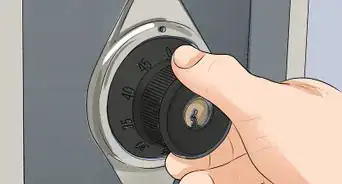
-Step-25.webp)




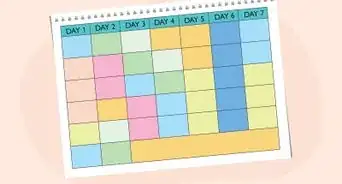





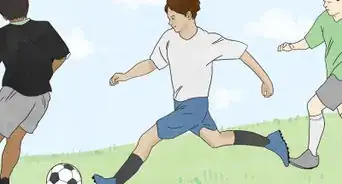
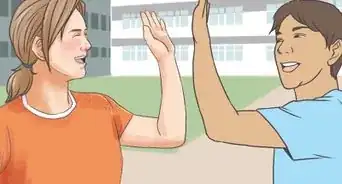






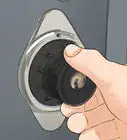
-Step-25.webp)




































